14.03.2024
Third satellite-carrying transatlantic Beluga flight lands in Florida
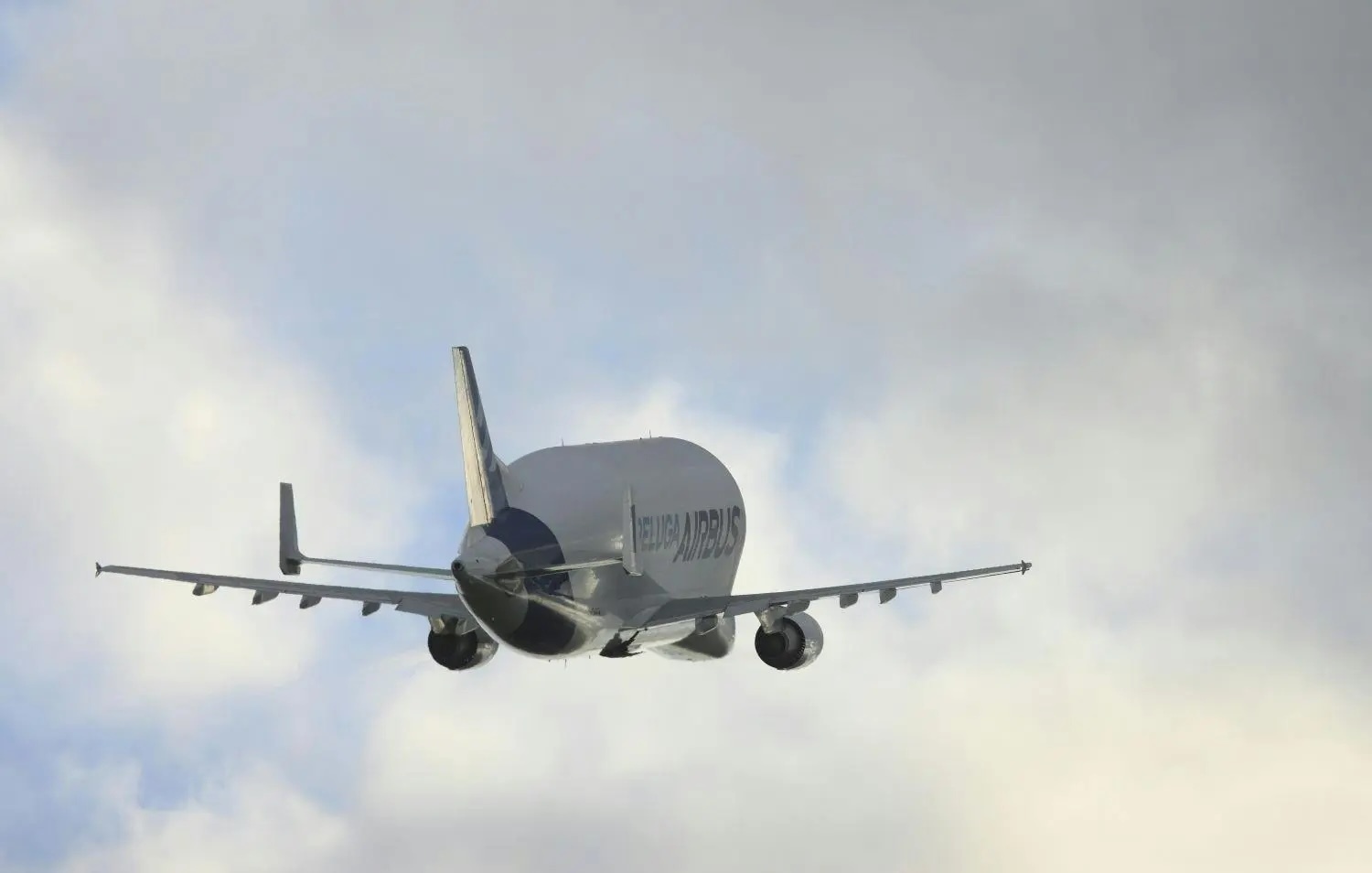
A Beluga aircraft departures from Toulouse, France. Credit: Airbus
TAMPA, Fla. — The Airbus-built Eutelsat 36D geostationary communications satellite landed in Sanford, Florida, March 11 ahead of a SpaceX Falcon 9 launch slated from the nearby Kennedy Space Center at the end of the month.
Eutelsat 36D had set off Saturday on an Airbus BelugaST (Super Transporter) from France where the satellite maker is based. It is the third time the manufacturer’s alternative to Ukrainian Antonov aircraft has flown a large satellite across the Atlantic since Airbus started offering an outsized freight transportation service two years ago.
The roughly 5,000-kilogram satellite is due to travel by truck to its launch site.
French fleet operator Eutelsat ordered the satellite in 2021 to replace Eutelsat 36B before it runs out of fuel in 2026 at 36 degrees East, where the satellite has been providing TV broadcast and government services across Africa, Russia, and Europe for more than 14 years.
Eutelsat 36D has 70 Ku-band transponders and is based on the Airbus Eurostar Neo platform with all-electric propulsion, meaning it would take five to six months post-launch to reach its orbital slot and enter service.
Transportation competition
Airbus also built the other two satellites that used a Beluga to fly from France to Florida: Viasat’s Inmarsat-6 F2 in January 2023 and Eutelsat’s Hotbird 13G in October 2022.
Hotbird 13G flew on the first Beluga to visit the United States since the 2009 delivery of Europe’s Tranquility module for a Space Shuttle launch to the International Space Station.
Airbus is hoping to attract more customers looking to transport satellites, built by companies other than itself, after getting certification in November to run the service under a dedicated airline.
While customers can use boats to ship spacecraft overseas, aircraft can shed weeks off a long-distance trip to give operators more certainty about meeting launch windows.
Antonov aircraft continue to be a mainstay for the space industry despite questionable availability since Russia invaded Ukraine in early 2022.
The day Eutelsat 36D took off on a Beluga from France, an Antonov 124 also set off from Germany for Vandenberg, California, carrying the European Space Agency’s climate monitoring EarthCARE spacecraft, or Earth Clouds, Aerosols and Radiation Explorer. SpaceX is due to launch this Airbus-built spacecraft in May on a Falcon 9.
Beluga is designed to provide a complementary service rather than direct competition to Antonov, Airbus spokesperson Francisco Cadena said.
According to Cadena, Belugas create less pollution and are 10% wider so provide a better fit for larger spacecraft, but Antonovs are better suited for heavier payloads on longer ranges.
Quelle: SN
----
Update: 17.03.2024
.
Airbus-built EUTELSAT 36D satellite shipped inside the BelugaST to its launch site
22nd Airbus-built satellite for EUTELSAT
Fourth Airbus Eurostar Neo satellite delivered
Toulouse, The Airbus-built EUTELSAT 36D geostationary telecommunications satellite has been shipped from Toulouse, France to Sanford, Florida, USA, on board an Airbus BelugaST (A300-600ST). Its next step is the Kennedy Space Center, in Florida, where it will be launched into orbit aboard a SpaceX Falcon 9 later this month. With the advent of the new BelugaXL, based on the larger A330-200 platform, the A300-600 based BelugaST fleet is now fully available for outsized freight transport services globally.
EUTELSAT 36D is based on the latest generation Eurostar Neo geostationary telecommunications satellite and will provide TV broadcasting (DTH) and government services over Africa, Europe and eastern countries and has a planned lifetime of more than 15 years.
Philippe Pham, Head of Telecommunications & Navigation Systems at Airbus, said: “EUTELSAT 36D is the latest milestone of our longstanding partnership with Eutelsat stretching back more than 30 years. It is the 22nd geo satellite we have built for them and will provide extended capacity over Africa and Eurasia.”
With 70 physical Ku-band transponders, the all-electric EUTELSAT 36D will assure all the main legacy missions of EUTELSAT 36B, with enhancements to coverage and performance.
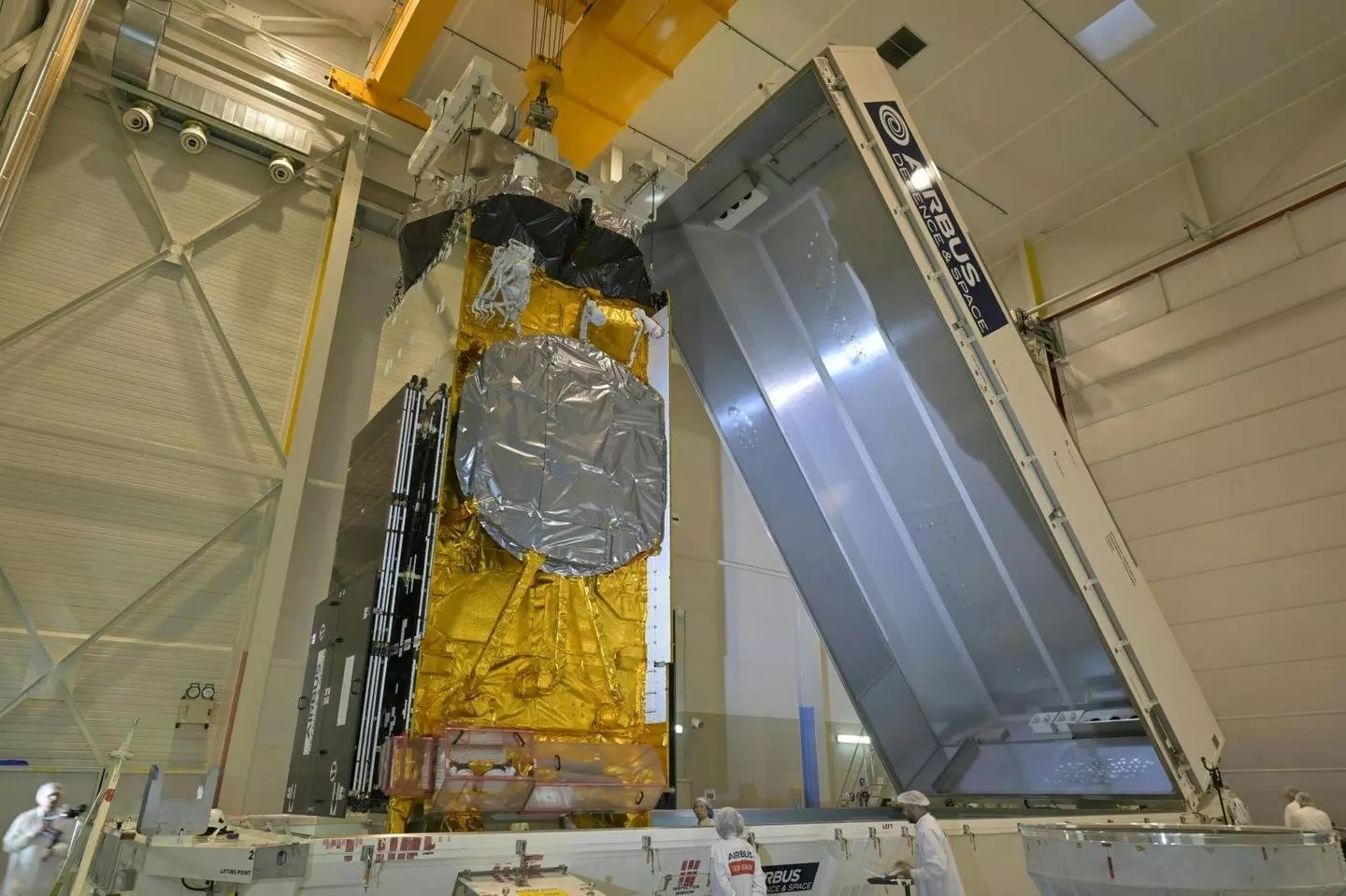
It is the fourth Eurostar Neo in orbit. Eurostar Neo satellites combine increased payload capacity and more efficient power and thermal control systems with reduced production time and optimised costs as part of a fully digitalised production process. EUTELSAT 36D combines 18 kW of electric power with a reduced launch mass of approximately five metric tonnes, enabled by Airbus’ EOR (Electric Orbit Raising) capability, reinforcing Airbus’ position as the world leader in electric propulsion.
The Eurostar Neo family of Airbus telecommunications satellites is based on a next-generation platform and technologies, developed with the support of the European Space Agency (ESA), and others, including the Centre National d’Etudes Spatiales (CNES) and the UK Space Agency (UKSA).
This is the third time that a Beluga transport aircraft is delivering an Airbus geostationary satellite to the Kennedy Space Center in Florida. Previous missions include HOTBIRD 13G on 17 October 2022 and Inmarsat 6-F2 on 30 January 2023. Airbus' ability to offer an autonomous European solution is demonstrated by the transport of the Airbus satellites on the unique Beluga aircraft, a true example of pan-Airbus synergies.
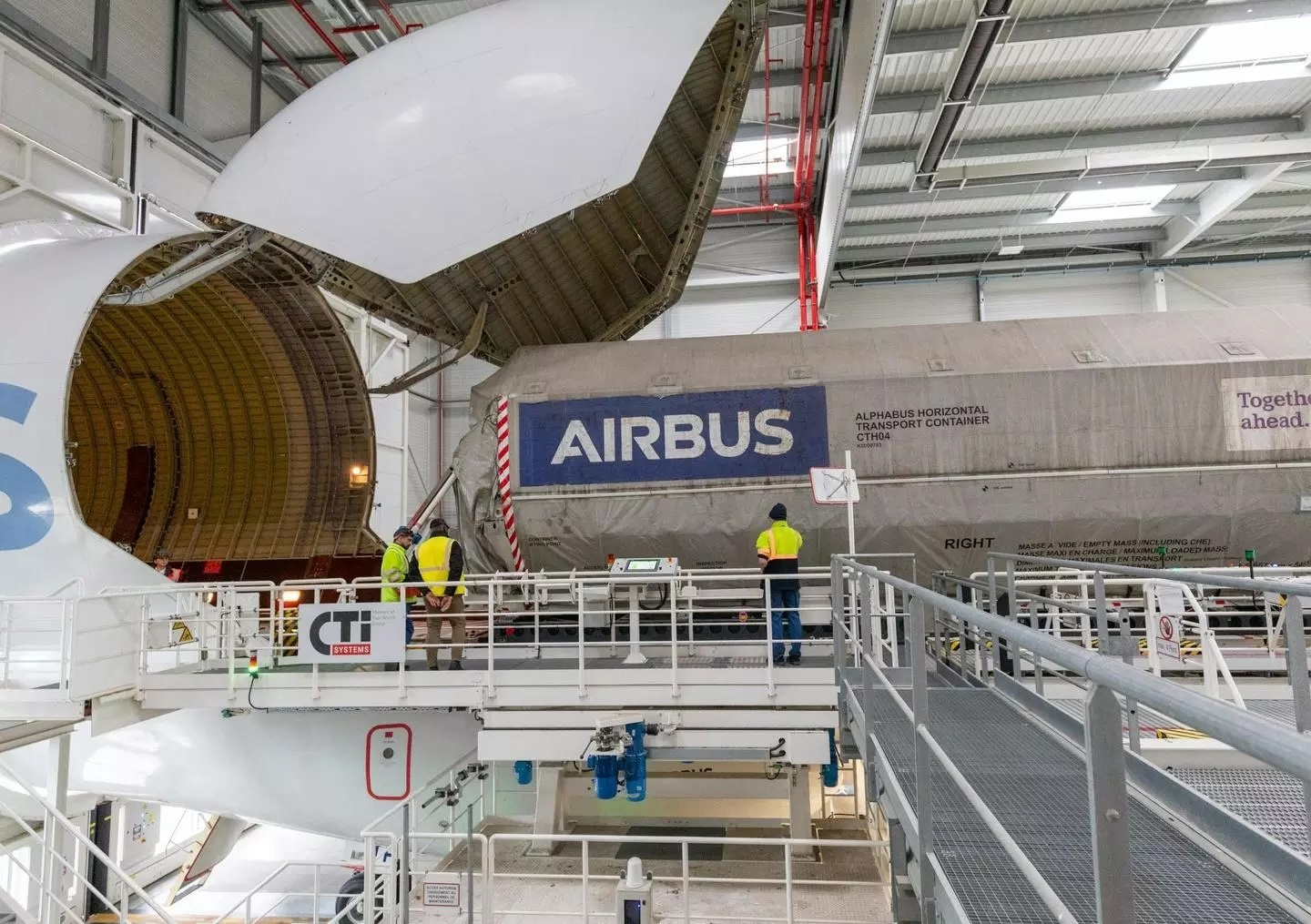
2779-airbus_beluga_transport-_eutelsat_36d-03
Quelle: AIRBUS
----
Update: 30.03.2024
.
SpaceX double Falcon 9 Launch from Cape: LIVE updates of Starlink, Satellite launches
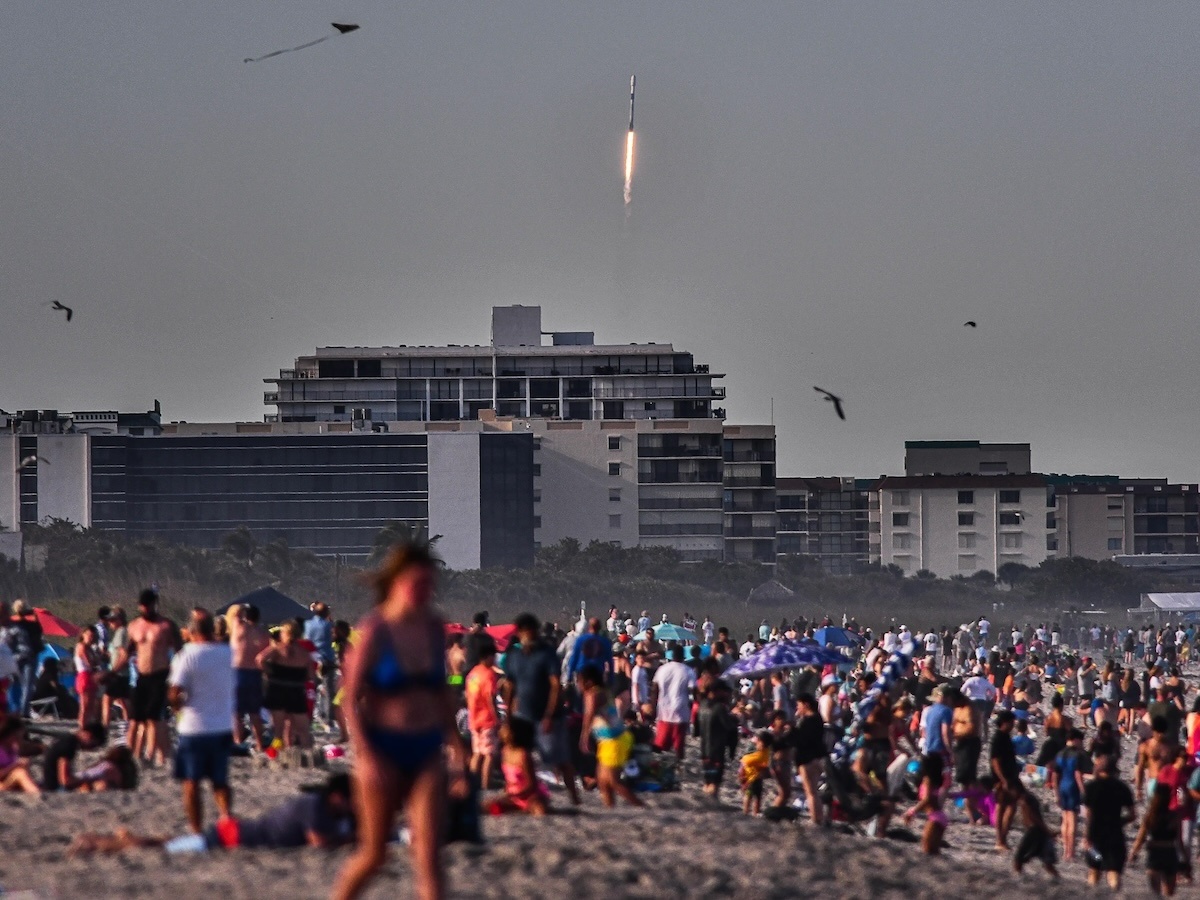
It's launch day — and, today, there's a rare treat with a planned SpaceX Falcon 9 Florida doubleheader. Tripleheader if you count a third SpaceX launch scheduled for California later tonight.
Welcome to FLORIDA TODAY Space Team's live coverage of the SpaceX launches from here, first at Kennedy Space Center and next at Cape Canaveral Space Force Station.
First up: a SpaceX Falcon 9 launched the Eutelsat36D satellite at 5:52 p.m. from Kennedy Space Center's Pad 39A. It's a telecommunications satellite for Africa and Eurasia. The Falcon 9 booster returned with a landing out on Just Read the Instructions drone ship in the Atlantic Ocean.
Just over three hours later, SpaceX will launch its next batch of 23 Starlink satellites from Cape Canaveral Space Force Launch Complex 40. Launch of the Starlink 6-45 is currently scheduled for 9:02 p.m. SpaceX said the window extends until 10 p.m.
The booster will land on A Shortfall of Gravitas droneship in the Atlantic Ocean so again no sonic booms will follow this launch.
Quelle: Florida Today
+++
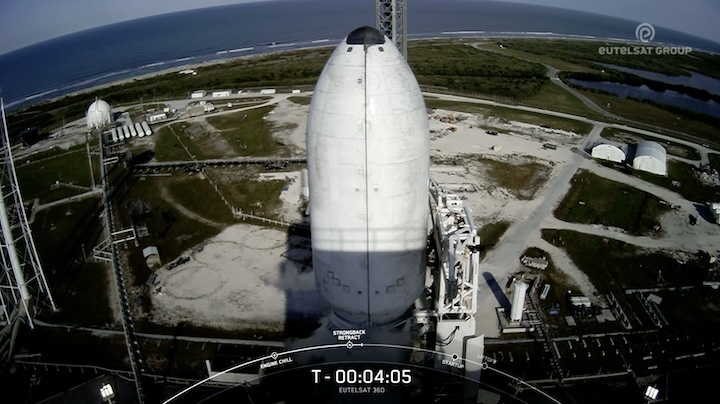
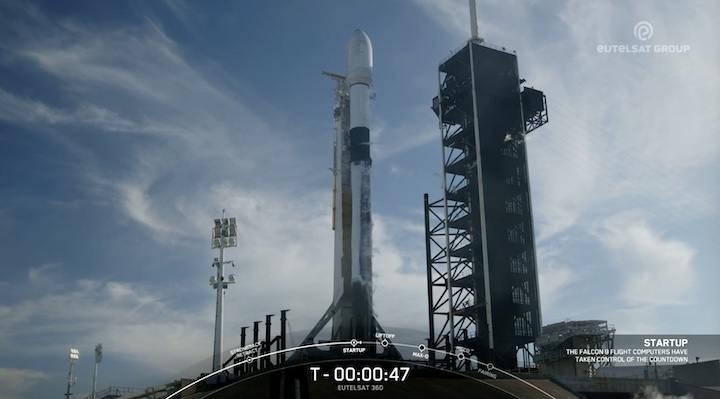
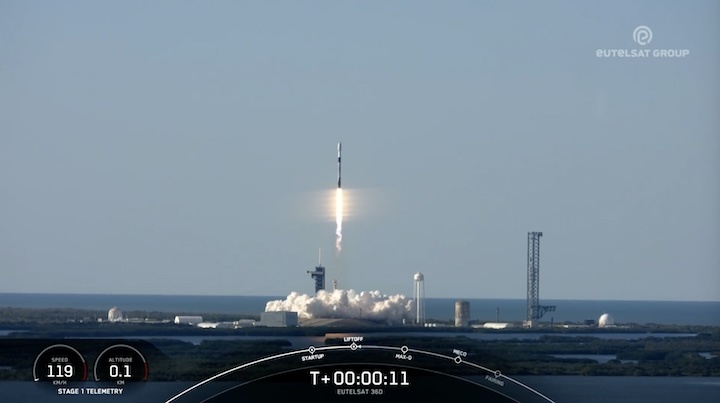
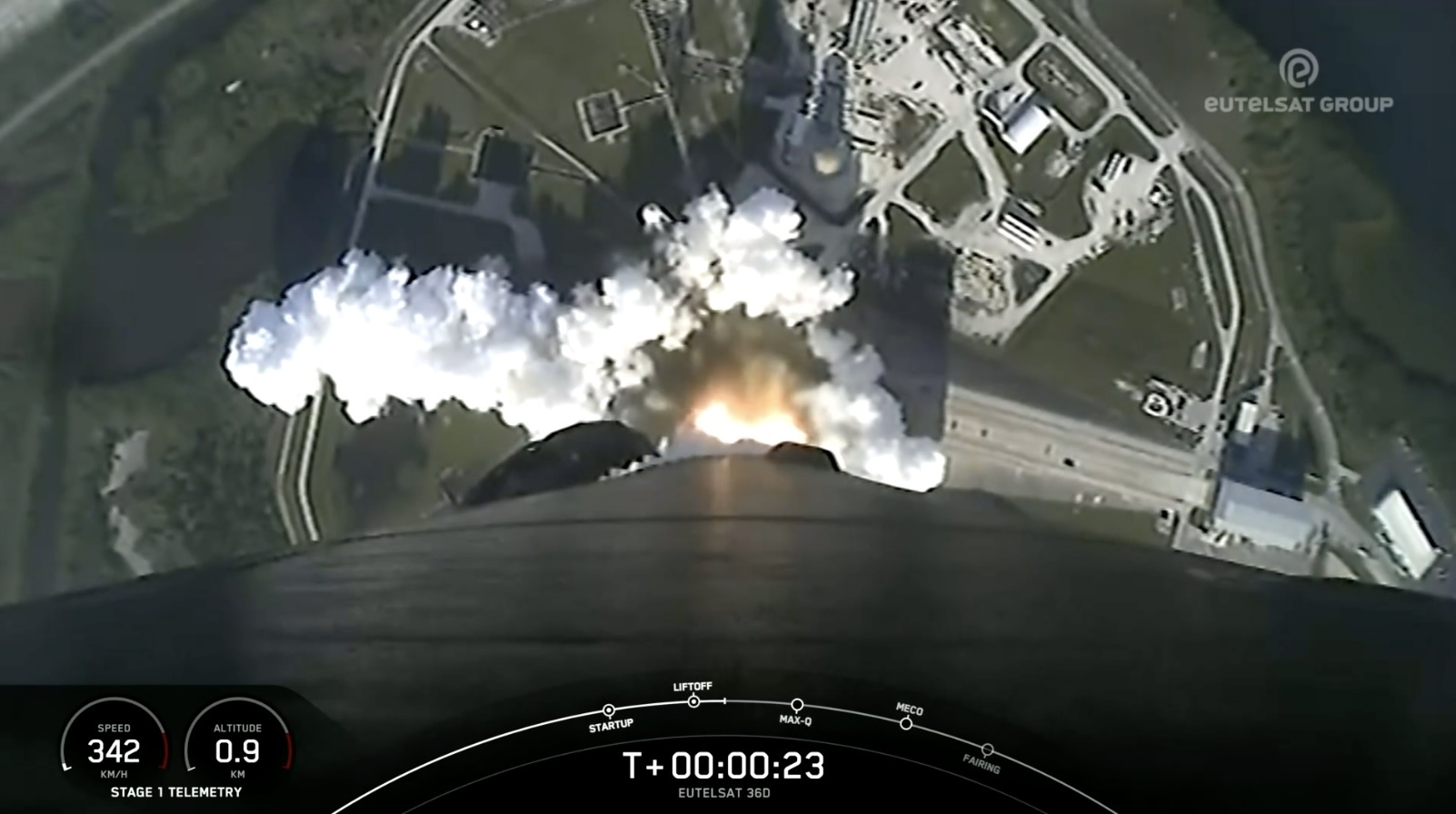
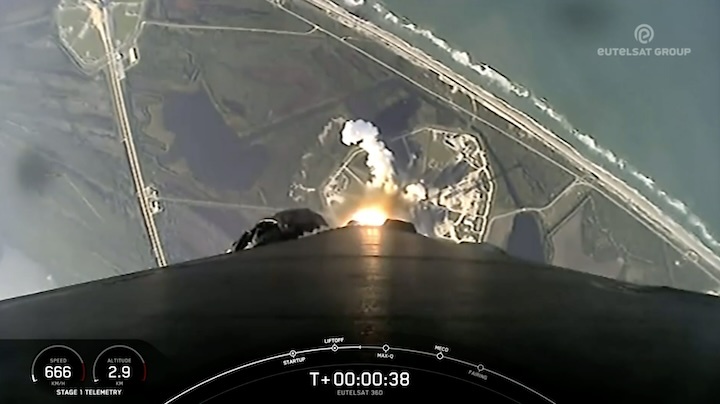
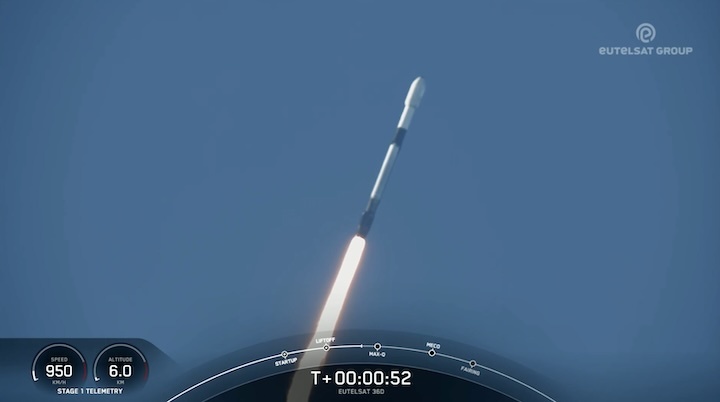
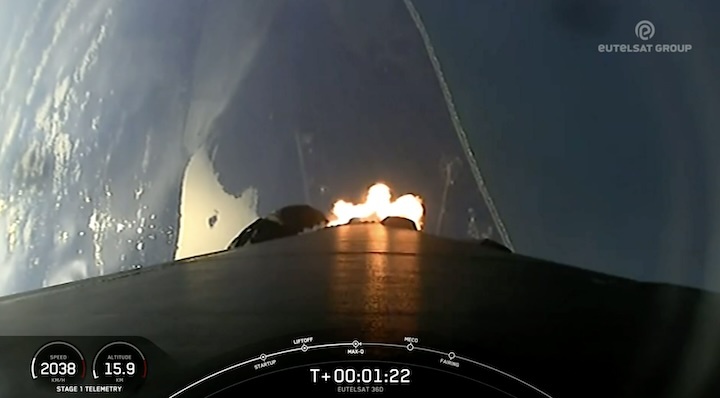
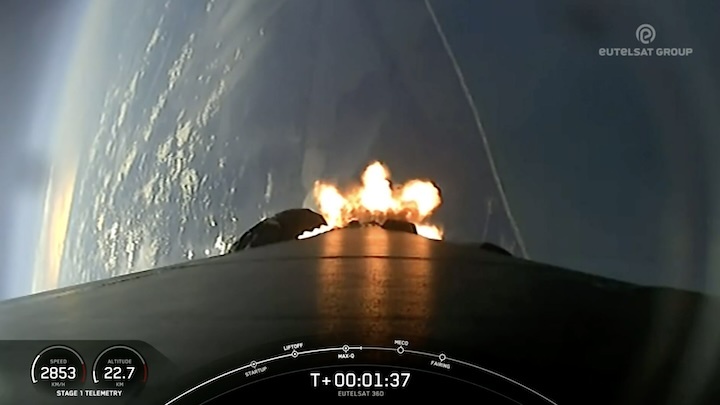
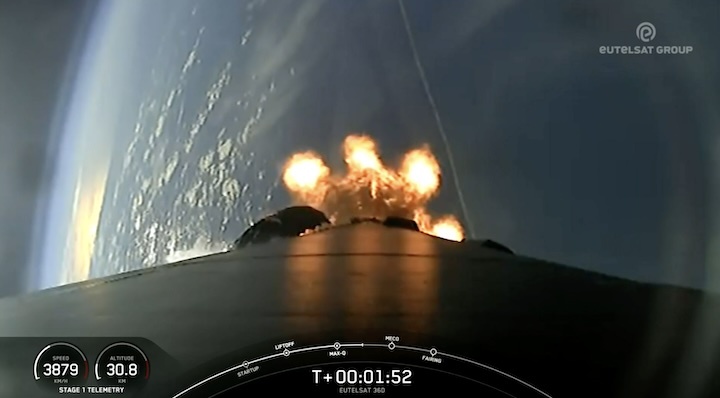

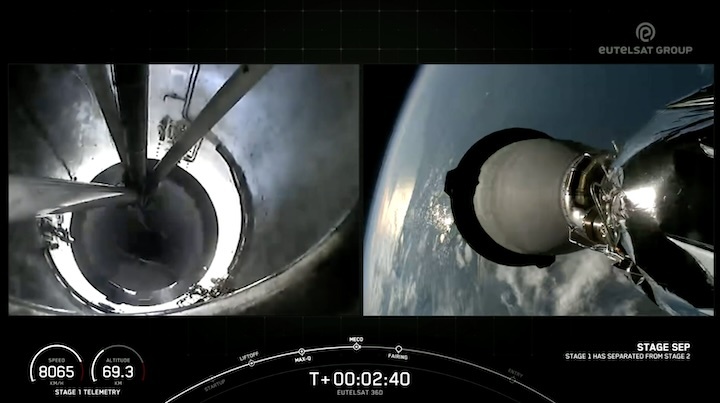
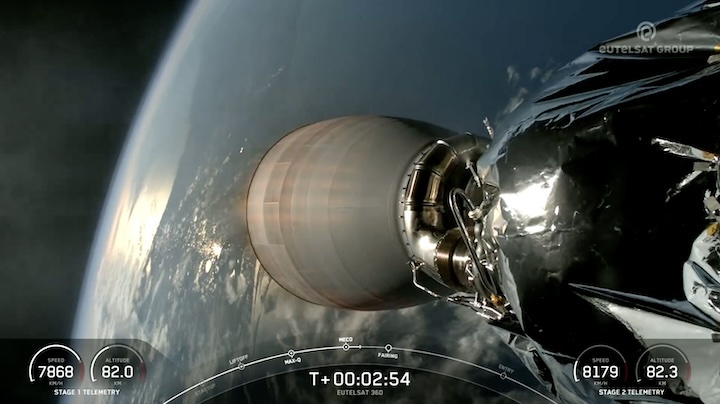
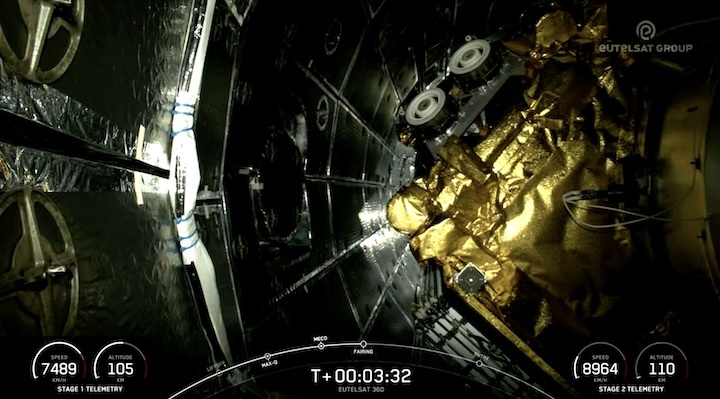
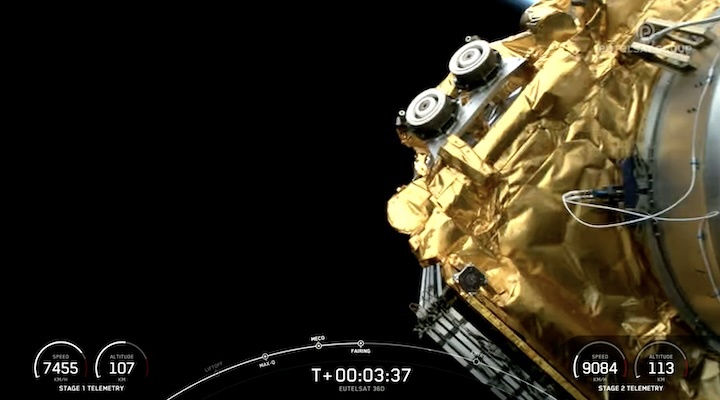
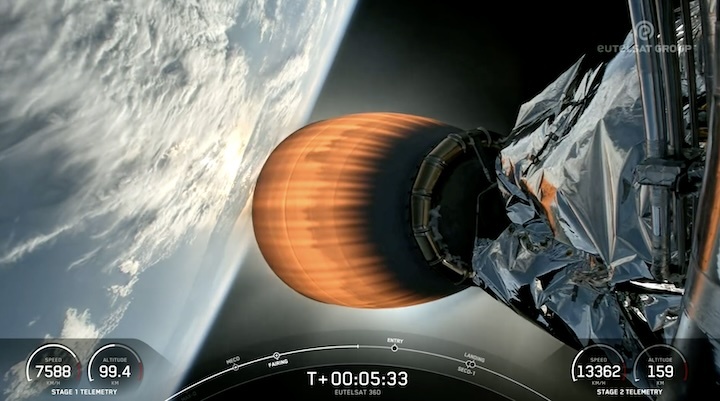
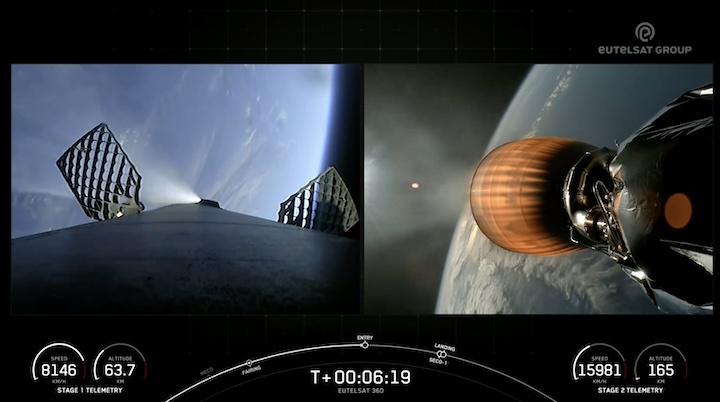
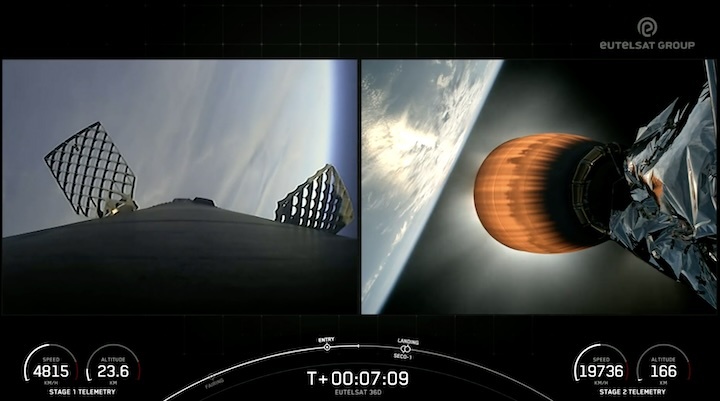
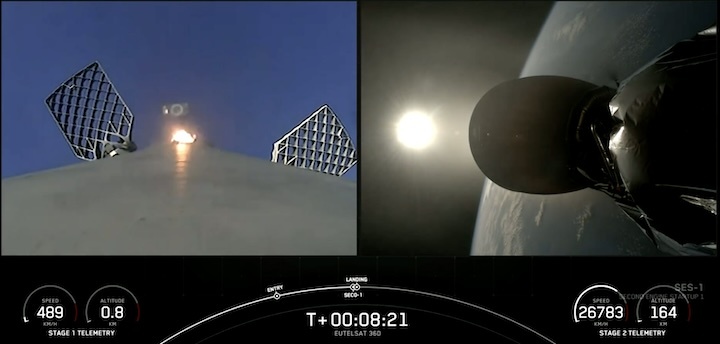
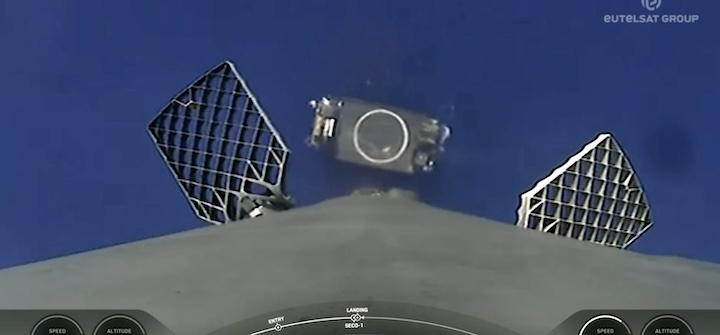
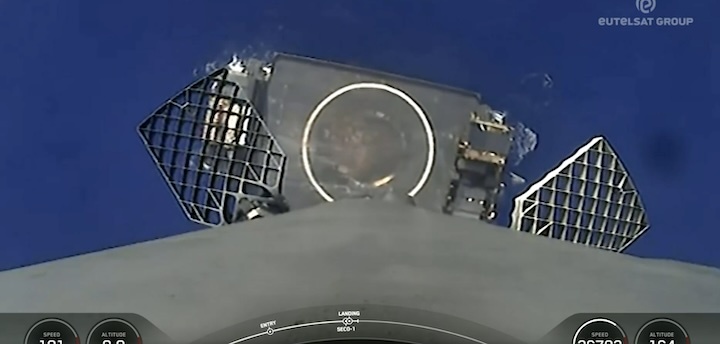
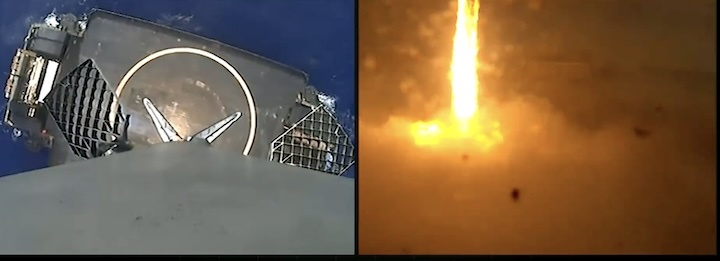
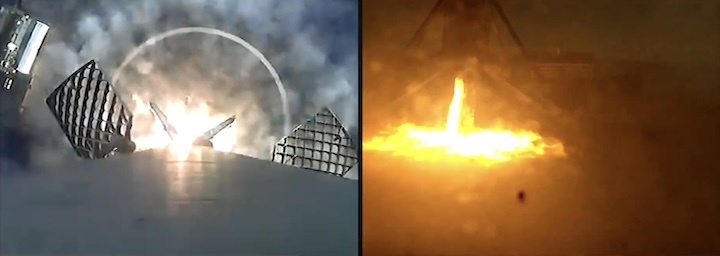
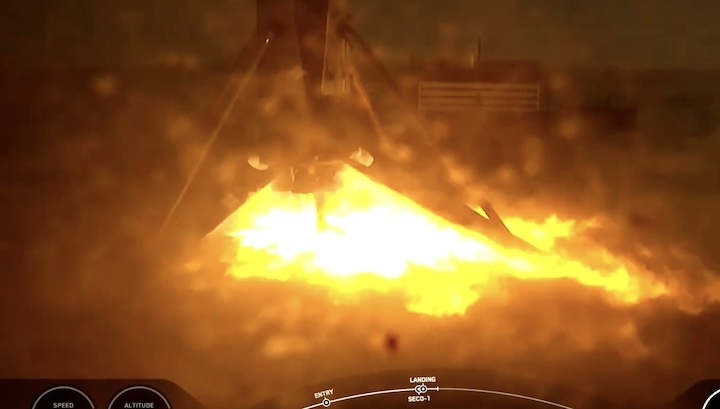
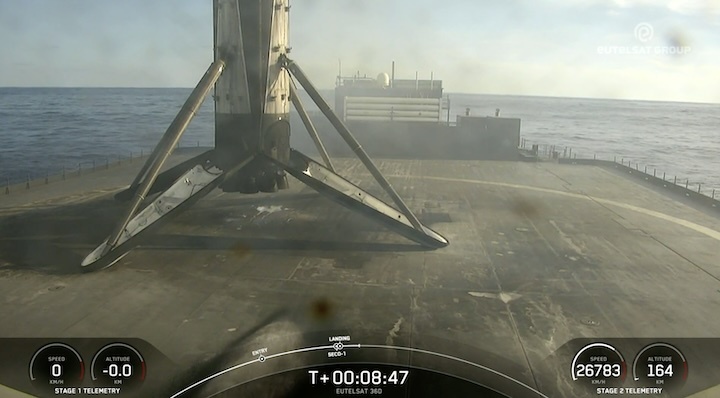
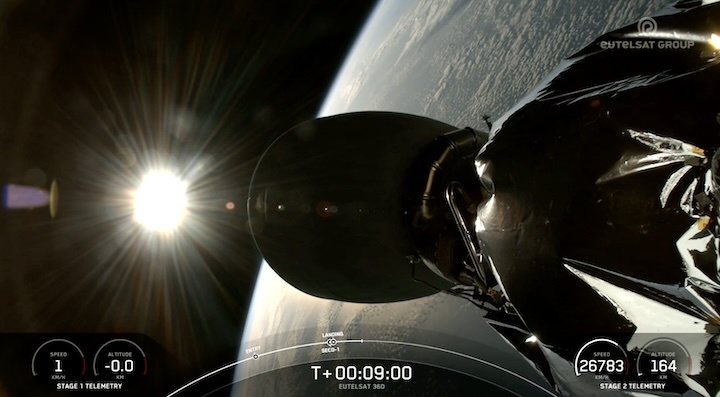
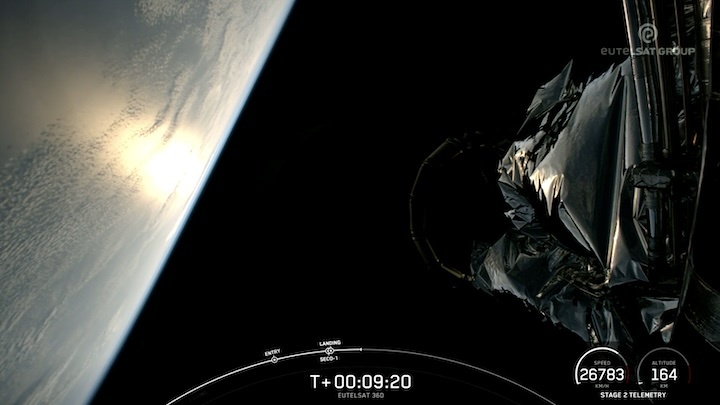
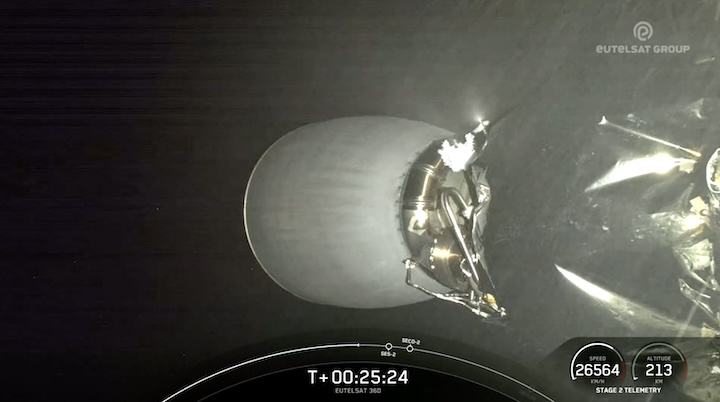
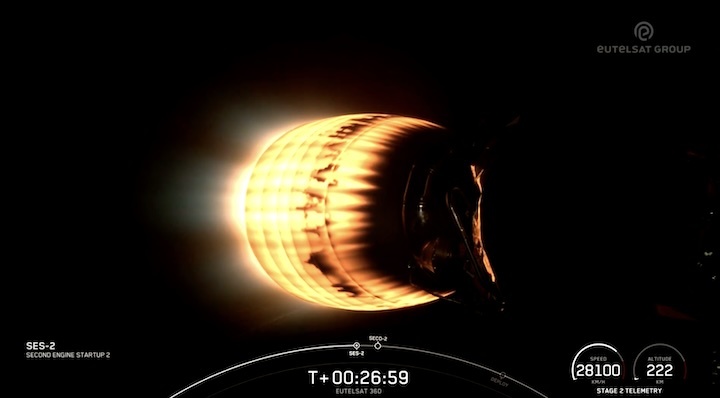

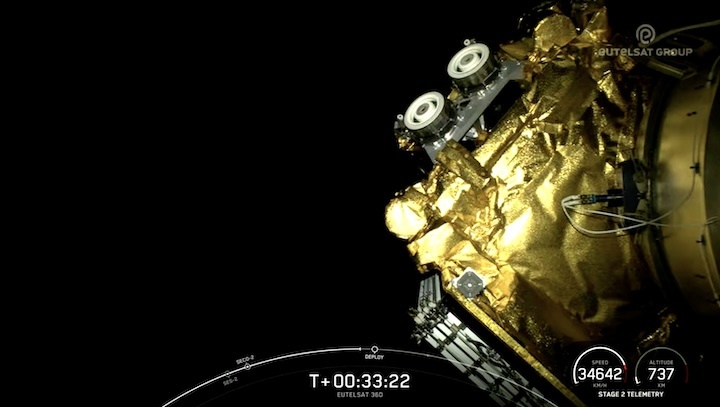
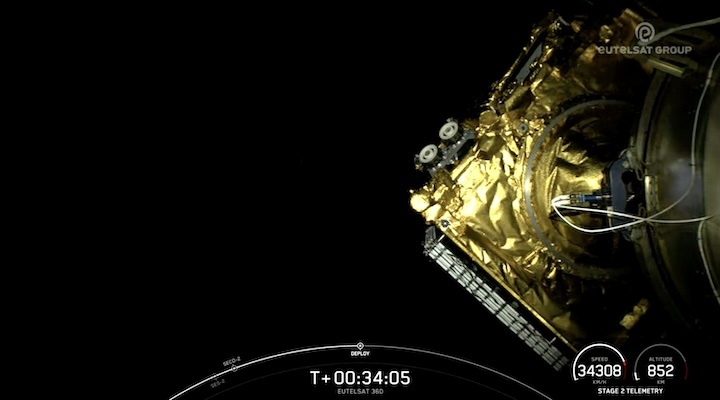
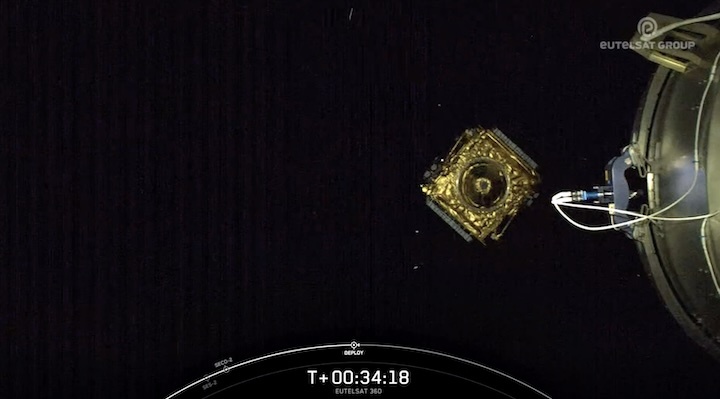

Quelle: SpaceX
